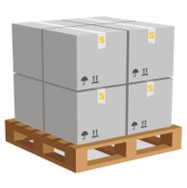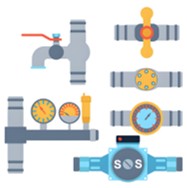
Cracking the code of garment sizing can feel like solving a secret cipher
- Spotting your body's key contours should begin the process
- Capture accurate bust, waist and hip numbers to avoid errors
- Examine the maker's fit table for accurate choice
Do not lean exclusively on size tags that may mislead you Opt to use your measurements to crosscheck the chart. Finding style remains a personal exploration and trial.
Understanding the enigma of measurement guides
Garment sizing bewilderment is a frequent global issue. Making sense of size matrices can tax the average shopper, as retailers adopt differing measurement conventions. Using a few strategies you can confidently interpret size tables.
- To start, recognise that US, UK, EU and Asian scales differ. Generally makers provide US, UK, European and regional Asian metrics.
- Subsequently, match the exact bust, waistline, hip and length data. Crosscheck the chart numbers with your personal figures.
- Ultimately, consult the brand guide for recommended adjustments. Seller guides may include pointers, exceptions and sizing hints.
Pinpointing perfect sizing during purchase
The domain of garment numbers often causes bewilderment. Label names vary and medium may translate to small across makers. Divergence is rooted in each label's particular measurement scheme. So begin by measuring yourself with care. Get a measuring tape and measure bust, waist and hips. Avoid assuming your regular size always guarantees fit. Garment type within a brand may result in differing fit. Determining the best fit is a process of trial and adjustment.

Selecting between off-the-shelf or tailored measurements
When selecting items that occupy space you weigh default versus custom sizing. There are benefits and drawbacks to either approach. Generic sizes supply ready availability and cost benefits. Tailored measurements serve odd shapes or particular use cases best
- Review needs against available funds before settling on size
- Record exact dimensions of the area or yourself
- Investigate manufacturers and available choices ahead of time
In the end the right dimension relies on your individual case.
Getting comfortable with global size equivalences
Adapting to different national and label sizing can be complex. Luckily, charts and calculators simplify cross-system translation. Commence by noting the usual clothing and shoe measurement methods. Leverage reference tables to convert international sizes. Realise that personal shape plays a role in choosing size. Read shoppers' comments and fitting tips to inform your choice.
Sizing decoded for everyday shoppers
Parsing size grids usually perplexes many shoppers. Manufacturers typically have bespoke measurement approaches, but this guide will clarify steps and tools to help you.
- First, use a tailor's tape to record your body dimensions
- Thereafter, confirm your dimensions with the provided size map
- Consider your silhouette because form affects fit perception
At last, physical fitting is the best means to secure correct sizing.
A thorough overview of standard men's and women's sizes
Online buying amplifies sizing uncertainty for many customers. Hence we've put together a comprehensive manual for gendered charts. From trousers to tops and dresses these pointers help select size.
- First tip: know that different brands and regions mean different sizes
- Subsequently, capture waist, hips, bust and chest numbers correctly
- Lastly, choose the larger size if your numbers land between charts
Following this guidance allows you to approach size charts with ease. Happy shopping!

Decoding kids' clothing sizes for parents
Picking the right size for children sometimes seems daunting. Rapid child growth causes frequent size changes. Rely on the label's measurements instead of suggested ages. Take chest, waist and height measurements to select sizeCorrectly measuring bust, waist and hip for fit accuracy
Achieving an ideal fit requires knowing your exact body measures. You will need a flexible tape and perhaps a helper to get precise readings. Keep an even posture with relaxed shoulders and feet spaced
All about size spans from extra small to double extra large
The current world of sizing contains many inconsistencies. Brand-to-brand variance makes finding a steady size difficult. A detailed review of ranges helps decode these complexities. Below we explore practical interpretations of size codes!
Celebrating body size inclusivity

Recognising diverse bodies rejects narrow beauty standards. It advocates for breaking down rules that limit acceptable shapes. Together we can create spaces that foster body comfort and pride.
- Adopt routines that strengthen body confidence and care Decide each day to Standard Size celebrate body kindness and positive views Choose body positivity and self-acceptance every day Opt for daily practices that reinforce body love
- Bear in thought that attractiveness spans diverse body types
- Critique visuals and stories that push a single beauty model
- Select habits that promote acceptance and healthy self-view
